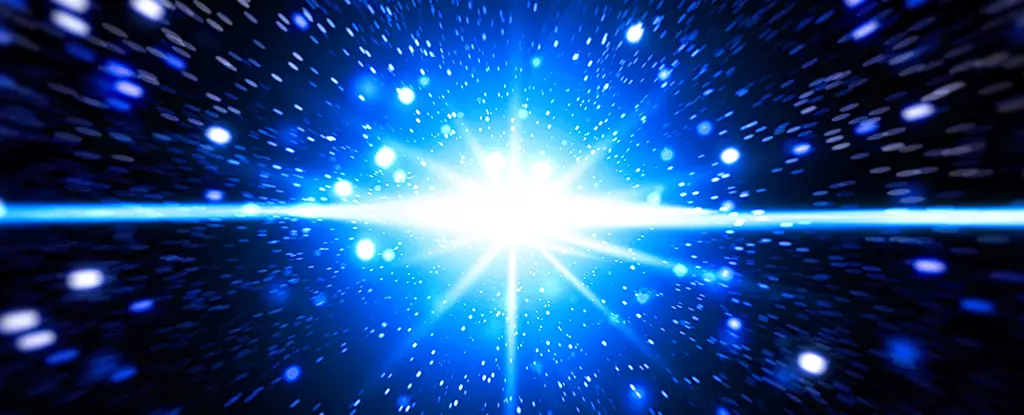For more than 8 billion years, a remarkably bright flash of radio waves has been traveling through the Universe, defying current leading theories. Recently, an international team of researchers utilized the Australian Square Kilometer Array Pathfinder (ASKAP) to detect this fast radio burst known as FRB 20220610A. This event stands out for several reasons, including its uncommon distance traveled and its incredible energy, exceeding previous model limits. Additionally, the dispersion measure associated with FRB 20220610A deviates from expectations, leading scientists to reassess their assumptions when utilizing these phenomena to study the Universe.
Fast radio bursts (FRBs) are rare events, with only a few dozen observed since their discovery in 2007. These intense bursts of radio waves last for milliseconds and are often one-off occurrences, although some repeat sporadically. The source of these bursts is still a subject of debate among astrophysicists. One possibility is that the emissions originate from neutron stars due to the shifts in their pressurized contents caused by powerful magnetic fields. The energy released in these phenomena could explain why FRBs are as bright as hundreds of millions of Suns, despite their fleeting nature.
However, the recent discovery of FRB 20220610A presents challenges to existing models. The energy emitted by this burst exceeds the brightness predicted by models proposing that FRBs are generated when high-speed particles associated with neutron star flares collide with surrounding stellar winds. This discrepancy forces researchers to reconsider the mechanisms behind the formation of exceptionally energetic FRBs like FRB 20220610A.
The observation of FRB 20220610A not only defies existing models’ predictions about its energy output but also challenges our understanding of how the light spreads through intergalactic space. When light travels through electromagnetic fields, different wavelengths interact with the field in distinctive ways. This interaction results in the splitting of wavelengths, similar to a rainbow after a storm. The interstellar and intergalactic vacuum contains gas and dust that also affects the propagation of light, causing different wavelengths to slow down at varying rates.
Researchers previously proposed that the burst of light from FRBs could be employed to measure the diffuse fog of material existing between the Milky Way and nearby galaxies. This measurement method could provide insights into the density of “hidden” non-dark matter and the expansion rate of the Universe. The dispersion measure, which increases with distance, follows a specific pattern known as the Macquart relation. This relation has held true for most FRBs within a few billion light years, except for a repeating burst detected last year in a dwarf galaxy located just under 4 billion light years away, presenting a dispersion measure twice as high as expected.
Upon examining other characteristics of the light emitted by FRB 20220610A, researchers suggest that a cosmic storm of turbulent, magnetized plasma could be responsible for the deviation of its spectrum. This cosmic storm likely exists between Earth and the host galaxy of FRB 20220610A. These findings indicate that certain dispersions in the Universe are more intricate and complex than previously thought.
The unexplained radio waves in the form of FRBs are proving to be potent tools in advancing our understanding of the Universe. With each new discovery, scientists edge closer to unraveling the mysteries behind these enigmatic phenomena. FRB 20220610A serves as a reminder that there is still much to learn, pushing researchers to question existing theories and search for alternative explanations.
The detection of FRB 20220610A has sparked intense scientific interest due to its exceptional characteristics. The energy and distance traveled by this fast radio burst exceed previous theoretical limits, challenging existing models. Furthermore, the deviations in the dispersion measure and light propagation patterns force astrophysicists to reevaluate their assumptions. The study of FRBs continues to shed light on the hidden parts of the Universe, bringing us closer to unraveling its secrets.


Leave a Reply